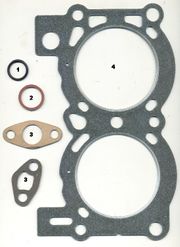Gasket types, generic
Description
For further information, please see AIC wiki Gaskets for Exhibit Cases
Gaskets are rubbery substances used at the interface of adjoining materials to reduce gaps and create tighter fitting joints. In exhibit cases, gasketry materials are frequently used at the junction of the exhibit cabinet and moveable access panels and doors. Gaskets are not only necessary at the entry- ways to the display chamber but also for the maintenance and lighting chambers. Using a gasket to seal gaps in exhibit case construction provides several conservation benefits:
- Controls air exchange between the case and the room
- Provides a sealed case that supports environmental control
- Inhibits the entry of unwanted pests, airborne soils, and atmospheric pollutants
- Safeguards against the accidental entry of water
Over the years, gasketry products have been made from a wide range of natural and synthetic materials. Today the manufacturing industry produces gaskets primarily from synthetic, rubber like polymers called elastomers.
Elastomer type:
To ensure that the gasket will not contaminate the case interior, select an elastomer proven to be stable through testing. The following are some examples of stable elastomers. Silicone rubber (dimethyl silicone): most stable of all elastomers, silicone is resistant to high and low temperature ranges, fatigue, most chemicals, oils, oxygen, and ozone. Cellular silicone sponge (poly-dimethyl siloxane also referred to as PDMS): silicone rubber that has been foamed into a uniform unicellular structure. It has the same characteristics as silicone rubber and is shaped by either extrusion or cutting. Ethylene propylene diene monomer (EPDM): resistant to ultraviolet light, ozone, oxidants, heat, compression set and resists the swelling effects of polar chemicals. Ethylene vinyl acetate closed-cell elastomeric seal (EVA): similar to other elastomers in flexibility and softness, EVA has relatively low resistance to heat and solvents but excellent ozone resistance.

